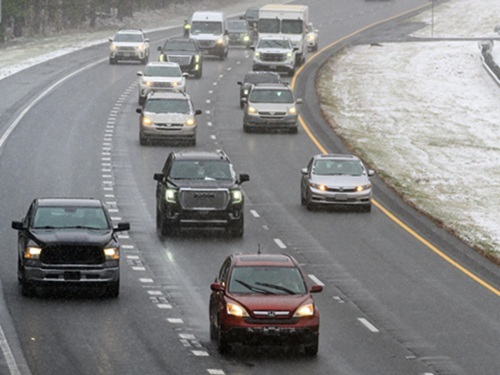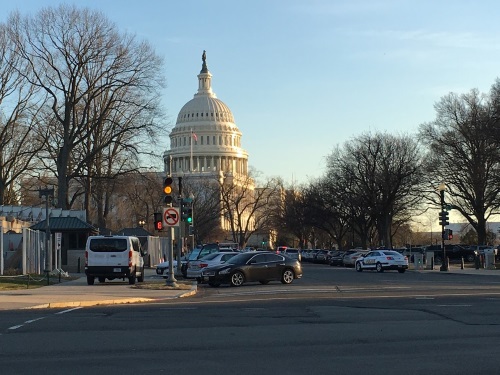Key Congressional Democrats reintroduced the Generating Resilient, Environmentally Exceptional National or GREEN Streets Act on February 23: legislation aimed at establishing “national goals” to reduce greenhouse gas or GHG emissions from the National Highway System and help states adapt their transportation systems to counteract the “adverse effects of climate change.”

“When we look at building back better and addressing climate change, our nation’s highways present us with an incredible opportunity,” noted Sen. Tom Carper, D-Del., chairman of the Senate Environment and Public Works Committee and one of the bill’s sponsors, in a statement.
“We need to establish bold goals for reducing transportation emissions and to deliver safe, reliable, zero-emission travel choices for the public,” he said. “Our bill would set the bar for states to encourage them to reduce vehicle emissions while improving health and reducing congestion in the process.”
The GREEN Streets Act would tie highway funding closely to new GHG emission standards:
- It would direct the Secretary of the U.S. Department Transportation to establish minimum standards for states to use to decrease greenhouse gas emissions and per capita vehicle miles traveled or VMT on the National Highway System.
- It would direct the USDOT Secretary to establish measures that states can use to assess and reduce carbon dioxide and other greenhouse gas emissions on the national highway system.
- It would require states that have fallen out of compliance with the per capita VMT standards or carbon dioxide or GHG emission measures to dedicate federal highway funding to come into compliance.
- It would require both states and Metropolitan Planning Organizations to consider projects and strategies that reduce per capita VMT and reduce GHG emissions from the transportation sector.
- It would require states and MPOs to publish an analysis of the impact on per capita VMTs and mobile source GHG emissions for every highway project that adds new lanes or otherwise increases traffic capacity and costs more than $25 million.
Coincidentally, the Federal Highway Administration noted on February 25 that national vehicle miles traveled or VMT dropped by 13.2 percent in 2020 due in large part to the COVID-19 pandemic: falling from 3.3 trillion VMT in 2019 to 2.83 trillion in 2020.
That decrease equates to an estimated reduction of nearly 170 million metric tons of carbon dioxide emissions, the agency noted.

The latest VMT data – published in the FHWA’s December 2020 “Traffic Volume Trends” report, a monthly estimate of U.S. road travel – shows that, combined, all miles driven on public roads and highways in 2020 reached its lowest point since 2002.
The agency noted in a statement that the nationwide closures of businesses, schools and other economic factors related to COVID-19 “are thought to be key factors” in 2020’s estimated 430.2 billion VMT decrease.
Despite a significant reduction in overall traffic volume, preliminary data from the USDOT show that roadway fatalities fell only slightly – by an estimated 2 percent for the first six months of the year.
 Nation
Nation
Registration Open for AASHTO’s Winter Rail Meeting
December 19, 2025 Nation
Nation

